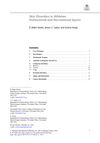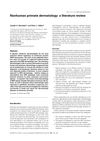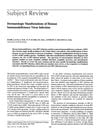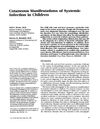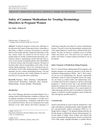Mucocutaneous Manifestations in Children with Human Immunodeficiency Virus Infection
January 2010
in “
Indian Journal of Dermatology, Venereology and Leprology
”
candidiasis bacterial infections viral infections varicella herpes simplex dermatophytosis deep fungal infections molluscum contagiosum human papillomavirus ulcerations oral hairy leukoplakia scabies pediculosis verruca pruritic papular eruption seborrheic dermatitis atopic dermatitis psoriasis drug eruptions vasculitis neoplastic conditions changes in hair and nails chickenpox cold sores ringworm HPV warts itchy bumps dandruff eczema skin cancer
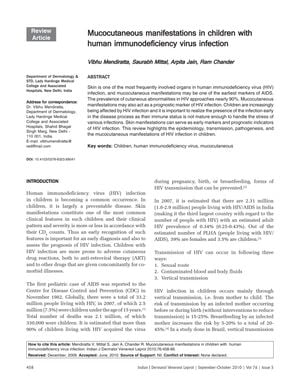
TLDR Children with HIV often have skin problems that can indicate the severity of their immune system damage.
The document reviewed mucocutaneous manifestations in children with HIV infection, highlighting that nearly 90% of HIV-infected individuals experience skin-related abnormalities, which can serve as early markers and prognostic indicators of the disease. It reported that in 2007, there were 33.2 million people living with HIV, including 2.5 million children under 15 years old. The review detailed that HIV transmission in children is primarily vertical (from mother to child), with a transmission risk of 15-25%, which can increase by 5-20% with breastfeeding. It explained that the pathogenesis of HIV involves the deterioration of the immune system, especially CD4 T-cells. The document listed various infections and conditions affecting HIV-infected children, such as candidiasis, bacterial infections, severe viral infections like varicella and herpes simplex, dermatophytosis, deep fungal infections, molluscum contagiosum, and human papillomavirus. It also described other manifestations like ulcerations, oral hairy leukoplakia, scabies, pediculosis, verruca, pruritic papular eruption, seborrheic dermatitis, atopic dermatitis, psoriasis, drug eruptions, vasculitis, neoplastic conditions, and changes in hair and nails. The document concluded that these mucocutaneous disorders correlate with CD counts and can help predict the level of immunodeficiency, which is valuable in settings with limited resources for CD count testing.
